Description
Frozen Pork Feet: Nutrition, Cooking Tips, and Global Culinary Traditions
Introduction
In today’s global food scene, consumers are rediscovering the value of frozen pork feet (also known as pork trotters). Once considered a humble cut, pork feet have gained popularity among chefs, home cooks, and nutrition enthusiasts. Why? Because they combine affordability, nutrition, and rich culinary tradition.
From hearty soups in China to crispy delicacies in the Philippines, pork feet have been cherished across cultures for centuries. Thanks to modern freezing technology, frozen pork feet are now available worldwide, ensuring freshness and convenience.
This article will walk you through everything you need to know about frozen pork feet — their nutritional value, health benefits, buying and storage tips, cooking methods, and famous recipes from around the world. By the end, you’ll see why frozen pork feet are worth a spot in your kitchen.
What Are Frozen Pork Feet?
Pork feet are the lower portion of the pig’s leg, consisting mostly of bone, skin, tendons, and connective tissue. Unlike prime cuts such as pork loin or ribs, trotters are not meaty. Instead, they are prized for their collagen-rich content, which turns into a silky, gelatinous texture when cooked slowly.
When frozen, pork feet are:
-
Cleaned and processed immediately after slaughter.
-
Blast-frozen or vacuum-packed to preserve freshness.
-
Available whole or sliced, depending on your cooking needs.
Frozen pork feet make it easy to enjoy this ingredient without worrying about spoilage. They can be stored for months and cooked whenever you’re ready.
Nutritional Value of Frozen Pork Feet
Although they don’t contain as much muscle protein as pork chops or ham, pork feet are a nutritional powerhouse in their own way.
Average Nutritional Profile (per 100g of cooked pork feet):
-
Calories: ~220 kcal
-
Protein: 15–18 g
-
Fat: 14–16 g
-
Carbohydrates: 0 g
-
Collagen/Gelatin: Very high
-
Key Minerals: Calcium, phosphorus, zinc, and iron
Why Collagen Matters
Collagen is the most abundant protein in pork feet. When slow-cooked, collagen turns into gelatin, which provides numerous benefits for skin, joints, and digestion.
Compared to lean pork cuts, pork feet may be higher in fat but are lower in calories than processed pork products like sausages or bacon.
Health Benefits of Frozen Pork Feet
Eating pork feet in moderation can provide multiple health benefits:
-
Supports Joint Health
Collagen helps repair cartilage and may reduce joint pain associated with aging or arthritis. -
Promotes Skin Elasticity
Gelatin helps retain skin hydration and elasticity, slowing down the appearance of wrinkles. -
Improves Gut Health
The amino acids in gelatin, like glycine, support a healthy gut lining and aid digestion. -
Rich in Essential Minerals
Calcium and phosphorus strengthen bones, while zinc supports immunity. -
Energy-Dense Food
The fat content makes pork feet filling and provides long-lasting energy.
⚠️ Note: Pork feet are high in fat and cholesterol. People with heart disease or high cholesterol should consume them in moderation.
Global Culinary Uses of Pork Feet
Pork feet are a beloved ingredient worldwide, each culture preparing them differently to highlight their unique texture.
Asia
-
China: Braised Pork Trotters in soy sauce, ginger, and spices.
-
Korea: Jokbal (soy-braised pig’s feet served with lettuce wraps and dipping sauces).
-
Philippines: Crispy Pata (deep-fried pork leg) and Paksiw na Pata (vinegar-braised).
-
Japan: Tebichi, Okinawan pork feet soup rich in collagen.
Europe
-
Germany: Eisbein, boiled pork knuckle with sauerkraut and mustard.
-
Poland: Golonka, braised pork knuckle served with potatoes.
-
France: Pieds de Porc à la Sainte-Menehould, breaded and baked pig’s feet.
Americas
-
Mexico: Patas de Cerdo en Escabeche (pickled pig’s feet with vinegar and chili).
-
Southern USA: Slow-cooked pork feet in bean stews or gumbo.
-
Caribbean: Pork feet are simmered with beans, rice, and spices.
Each recipe brings out the gelatin-rich, flavorful nature of pork feet.
Buying Guide: How to Choose Frozen Pork Feet
When shopping for frozen pork feet, keep these tips in mind:
-
Look for vacuum-sealed packaging: Prevents freezer burn and maintains freshness.
-
Check the color: Fresh pork feet should look pale pink to white, not grayish.
-
Choose cuts based on use:
-
Whole pork feet → braising and roasting.
-
Sliced pork feet → soups, stews, and broths.
-
-
Source responsibly: Buy from suppliers who follow hygienic and sustainable farming practices.
💡 Pro Tip: Buy in bulk if you plan to make collagen-rich bone broth.
Storage and Handling of Frozen Pork Feet
Proper storage ensures both food safety and flavor:
-
Freezer storage: Keep at -18°C (0°F) or below. Can last 6–12 months.
-
Thawing: Defrost in the refrigerator overnight for best results. Avoid room temperature thawing.
-
Preparation: Rinse thawed feet to remove any bone dust before cooking.
🚫 Never refreeze thawed, uncooked pork feet.
How to Cook Frozen Pork Feet
Cooking pork feet is all about slow heat and patience. The connective tissues break down into gelatin, creating tender, flavorful results.
Popular Cooking Methods
-
Boiling/Simmering – For soups and broths.
-
Braised – With soy sauce, vinegar, or wine for rich flavor.
-
Deep-Fried – After boiling, for a crispy finish.
-
Pickled – Stored in vinegar with spices for tangy flavor.
Recipes with Frozen Pork Feet
Here are some recipes you can try at home:
1. Simple Braised Pork Feet (Asian Style)
Ingredients
-
1 kg frozen pork feet (thawed)
-
3 tbsp soy sauce
-
2 tbsp vinegar
-
1 onion, sliced
-
4 garlic cloves
-
1 piece ginger
-
2 star anise
-
1 tsp peppercorns
-
Water to cover
Instructions
-
Rinse and blanch pork feet to remove impurities.
-
In a pot, add fresh water, soy sauce, vinegar, onion, garlic, ginger, and spices.
-
Simmer for 2–3 hours until tender.
-
Serve with steamed rice or noodles.
2. Filipino Crispy Pata
Ingredients
-
1 large pork leg (includes foot)
-
1 onion
-
5 garlic cloves
-
2 bay leaves
-
1 tbsp peppercorns
-
Oil for frying
Instructions
-
Boil pork leg with onion, garlic, bay leaves, and peppercorns until tender.
-
Pat dry and chill in the fridge for 6 hours.
-
Deep fry until golden and crispy.
-
Serve with vinegar dipping sauce.
3. Mexican Pickled Pork Feet
Ingredients
-
1 kg pork feet, boiled
-
2 cups vinegar
-
1 onion, sliced
-
2 jalapeños
-
1 carrot, sliced
-
2 garlic cloves
-
1 tsp oregano
Instructions
-
Boil pork feet until tender, then cool.
-
Combine vinegar, vegetables, and spices in a jar.
-
Add pork feet and refrigerate for 2–3 days before serving.
Frozen vs. Fresh Pork Feet
| Feature | Fresh Pork Feet | Frozen Pork Feet |
|---|---|---|
| Shelf Life | 2–3 days | 6–12 months |
| Availability | Limited, seasonal | Year-round, global |
| Convenience | Must cook quickly | Cook anytime |
| Nutrition | Same | Same if properly frozen |
👉 Verdict: Frozen pork feet offer greater convenience without losing quality.
Frequently Asked Questions (FAQ)
1. Do pork feet taste different from fresh ones?
No, if properly stored, they taste the same.
2. Can I use pork feet to make bone broth?
Yes, pork feet are one of the best sources for collagen-rich broth.
3. How long should pork feet be cooked?
Generally 2–3 hours of simmering or braising for tender results.
4. Are pork feet good for weight loss?
They are nutrient-dense but high in fat, so they should be consumed moderately.
5. Can pork feet be grilled?
Yes, but they must be pre-boiled to soften before grilling.
Conclusion
Frozen pork feet may not be the star of every butcher’s display, but they are a hidden gem in the kitchen. With their collagen-rich nutrition, cultural significance, and culinary versatility, they deserve recognition beyond being just a “secondary cut.”
Whether you want to make Asian braised dishes, European stews, or Latin pickles, frozen pork feet deliver flavor and nutrition at an affordable price. Plus, freezing technology ensures that you can always have them on hand for when inspiration strikes.
So the next time you’re looking for something hearty, budget-friendly, and rich in tradition, consider adding frozen pork feet to your shopping list.


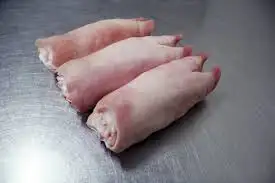

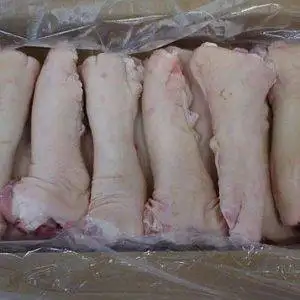

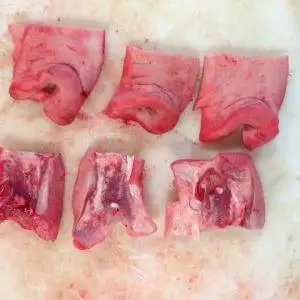
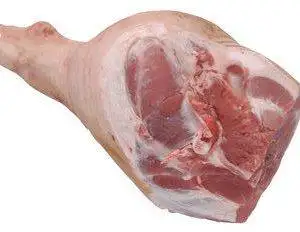
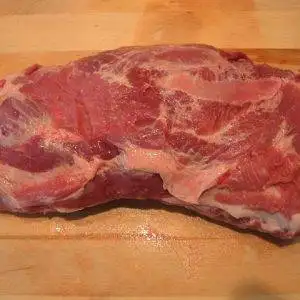
Reviews
There are no reviews yet.